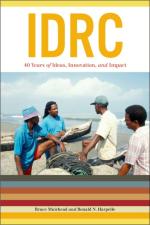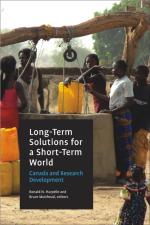What Students Say
“While watching the videos, I sat and thought about what I would do if I was in the shoes of one of the people in the video. I found it very hard to see myself dealing with the hardships that the interviewees were encountering”
“When the news presents a story today, the story seems to be blown out of proportion and influenced by popular opinion. These stories on the other hand allowed me to connect with and gain interest in the person and problem presented in each video.”
“The Engaging the World activity was informative and eye-opening. I found the interactive feature especially useful.”
“I felt that I got a lot out of what I was viewing in terms of new ideas I had not heard of, interesting details, and useful information concerning the topics.”
“I liked that I got to choose what I was going to view and Engaging the World allowed me to make a decision based on what interested me.”
Excerpts from comments by students in Sociology 2002 at Louisiana State University
Use Engaging the World in the Classroom
Engaging the World has been used in high school and undergraduate classrooms to introduce students to a wide variety of themes dealing with international development. The flexibility of a non-linear documentary provides instructors with a number of ways of engaging students in the challenges of international development. Engaging the World is built on a platform of critically interacting video components that are designed to illicit critical responses from viewers. Every experience with Engaging the World is a personal experience for the viewer because the Korsakow program self generates viewing options for the next video segment to form an evolving structure for the film.
The keywords used for the videos include terms such as, women, agriculture, water, health, ICTs, and education. Also, the keywords include the countries the stories originate in and the names of the individuals in each clip. As a result, a video on women and agriculture in India will trigger new video options that include women, India and agriculture. No two people will get the same set of options or make the same choices about the videos they will watch. Every screening of the web-doc will be different and this is the magic of an interactive non-linear documentary.
Bear in mind that students who are assigned to watch the film on their own will participate differently in discussions than if the film is shown in class to a group. Both approaches to using the film as a teaching tool are effective in their own way and lead to different teaching outcomes. This is because students will either come armed with a variety of individual approaches to a common problem or work from a common set of established benchmarks to deal with the issue at hand.
A Few Ideas For Engaging Students
- The instructor can begin classes using one or two clips to break the ice. In this scenario students can be asked to pick which video they would like to see next and then after each video the instructor can pause for a brief discussion.
- The instructor can also include questions on tests or exams about specific issues or themes discussed in the web-doc.
- Students can be assigned to watch Engaging the World on their own in its entirety and then write an essay based on what they have learned.
- Students can also be asked to view a set number of videos and then write an essay that explains how the various development challenges are linked to one another.
- Students can be separated into study groups to view segments of Engaging the World and debate the issues.
- Most of the videos are of individuals with reputations and publications. Students can be asked to research someone like Vanda Shiva, Dipak Gyawali or Margaret Catley-Carlson or to read something they have written.
- Instructors can combine Engaging the World with the books and documentary film series that are a part of the supplementary materials listed below.
Supplementary Materials
Although Engaging the World is designed as a stand-alone teaching tool, it can also be accompanied by one or both of the books on international development published by Bruce Muirhead and Ron Harpelle. The documentary series about research for development is also available for classroom use.
The Books
 Consider having students read IDRC: 40 years of Ideas, Innovation and Impact, (Waterloo: Wilfrid Laurier University Press, 2010). This is a history of IDRC that illustrates the course of international development thinking from 1970 to 2010. This title is also available in French as CRDI: 40 ans d’idées, d’innovations et d’impacts, published by Les Presses de l’Université Laval.
Consider having students read IDRC: 40 years of Ideas, Innovation and Impact, (Waterloo: Wilfrid Laurier University Press, 2010). This is a history of IDRC that illustrates the course of international development thinking from 1970 to 2010. This title is also available in French as CRDI: 40 ans d’idées, d’innovations et d’impacts, published by Les Presses de l’Université Laval.
If you are interested in reading about some of the researchers interviewed in Engaging the World you can find chapters by them in Long Term Solutions in a Short Term World: Canada and Research for Development, (Waterloo: Wilfrid Laurier University Press, 2011).
The Film Series
 If you are interested in a much more in-depth exploration of research for development you can watch Kelly Saxberg’s Citoyens du Monde/Citizens of the World a six-part documentary series on International Development. The series is available in English and French. Click here to find out more about the documentary series.
If you are interested in a much more in-depth exploration of research for development you can watch Kelly Saxberg’s Citoyens du Monde/Citizens of the World a six-part documentary series on International Development. The series is available in English and French. Click here to find out more about the documentary series.
Find it online
You can also find information about many of the people in Engaging the World. Many of them are the authors of articles, books and reports and they have made significant contributions to international development over the years. The names of the individuals in the videos are listed under People in the menu above.

